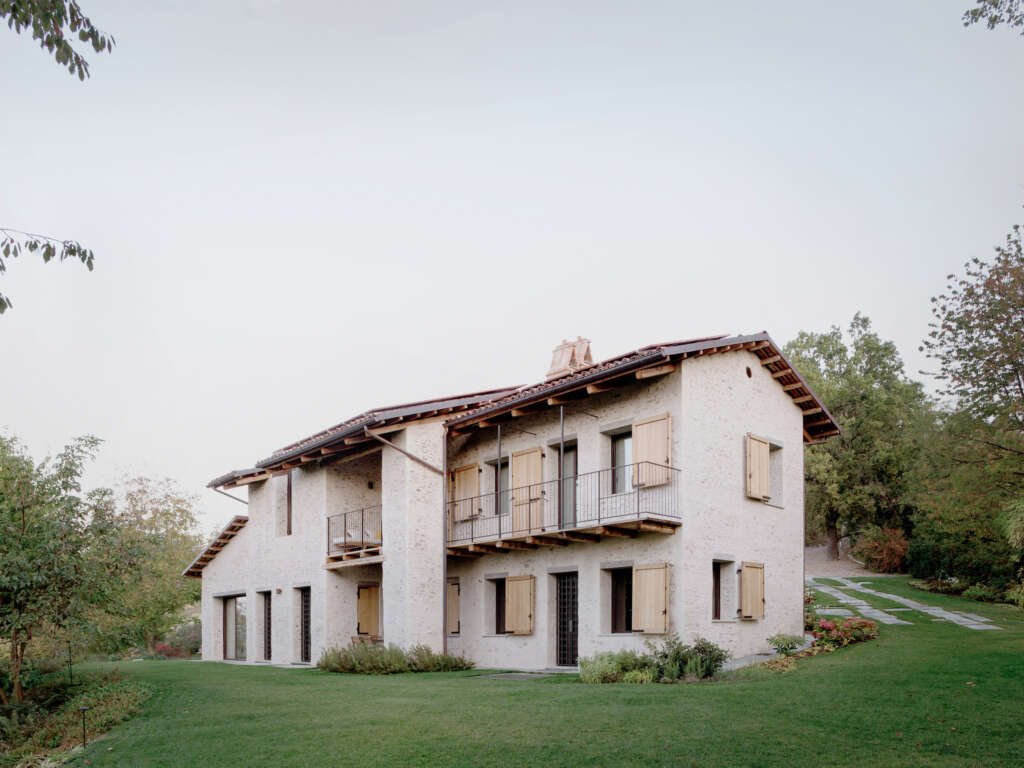
Cascina
Architect: Jonathan Tuckey Design
Location: Piemonte, Italy
Type: House
Year: 2020
Images: Francesca Iovene
The following description is courtesy of the architects. Jonathan Tuckey Design has restored a historic 19th century farmstead in the Piemonte region of Northern Italy, transforming the sprawling hillside ensemble into a tactile, sunlit home and creative studio for a prominent fashion designer and naturalist.
The brief presented a simple desire; to rediscover the property’s agrarian soul and establish a connection to the beautiful surrounding landscape. Specialists in the reuse of existing buildings, Jonathan Tuckey Design peeled back layers of modern intervention from a 1990’s renovation to restore the building’s whimsical character, and upgrade its thermal envelope with the addition of new, sustainable systems.
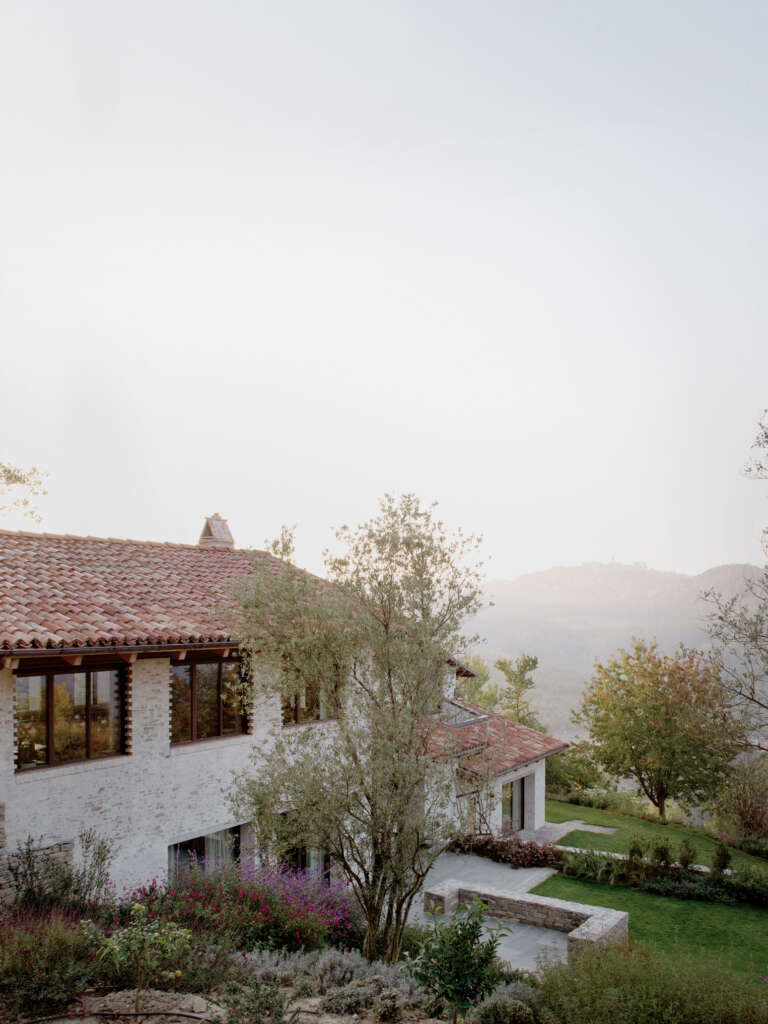
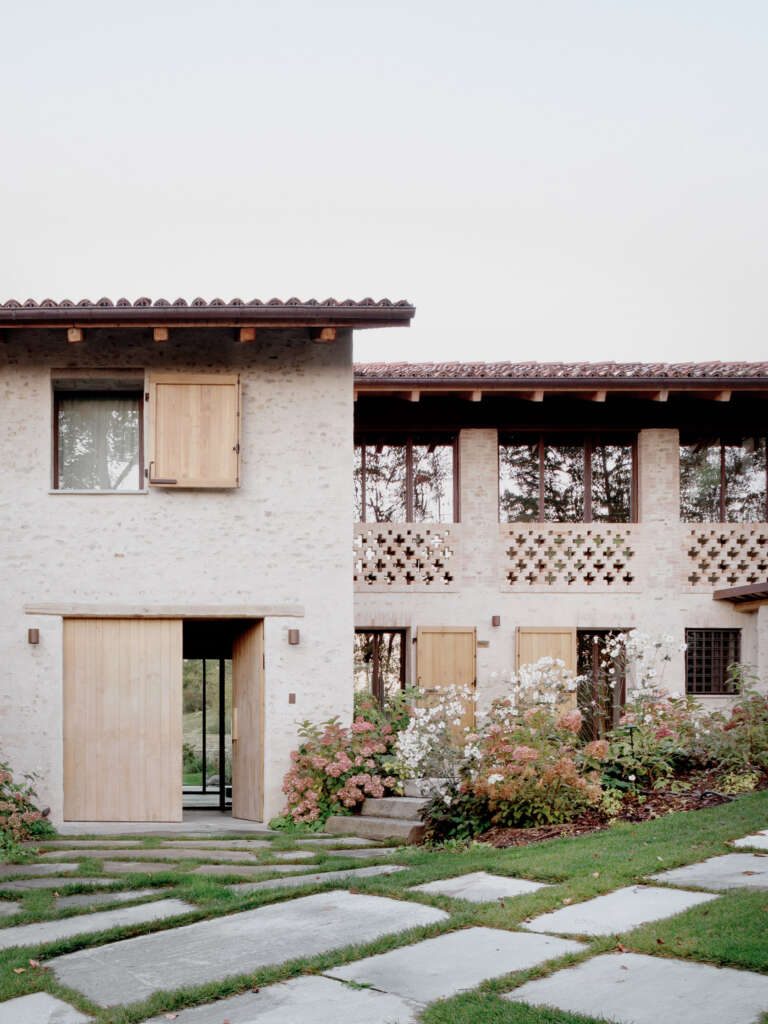
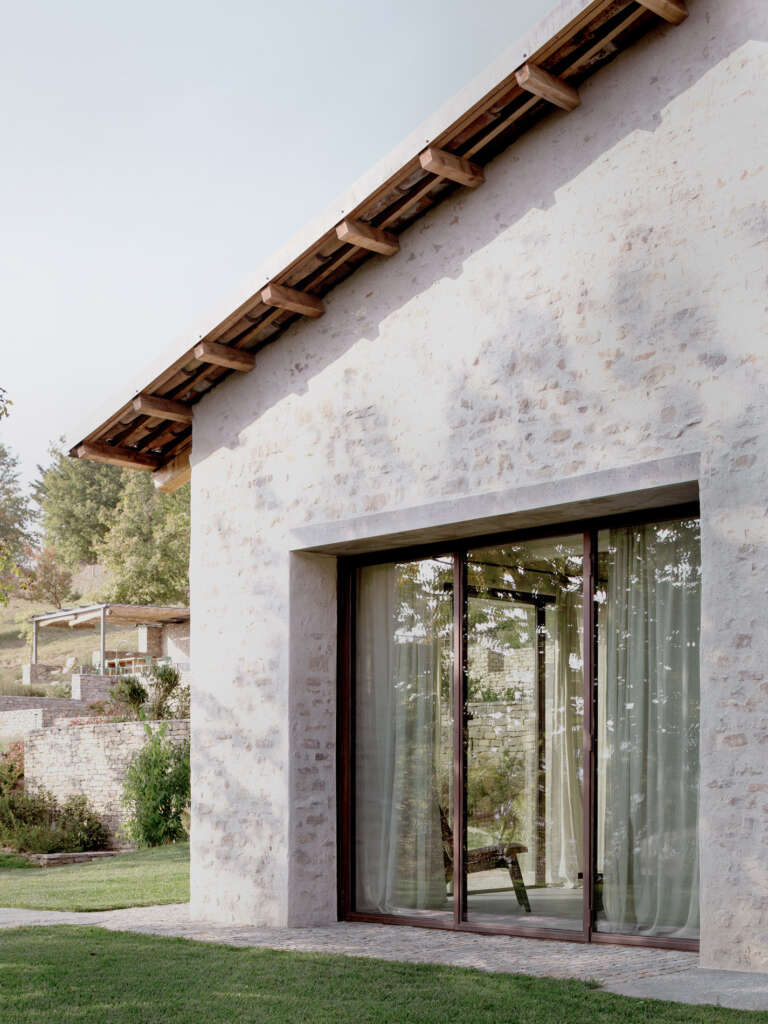
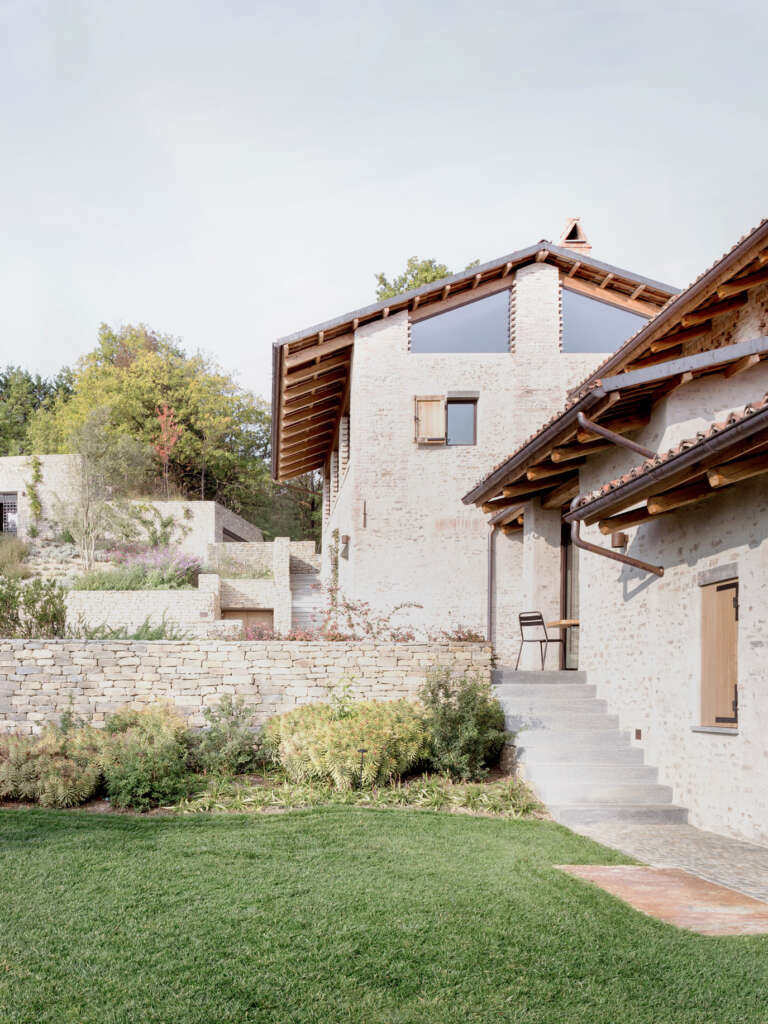
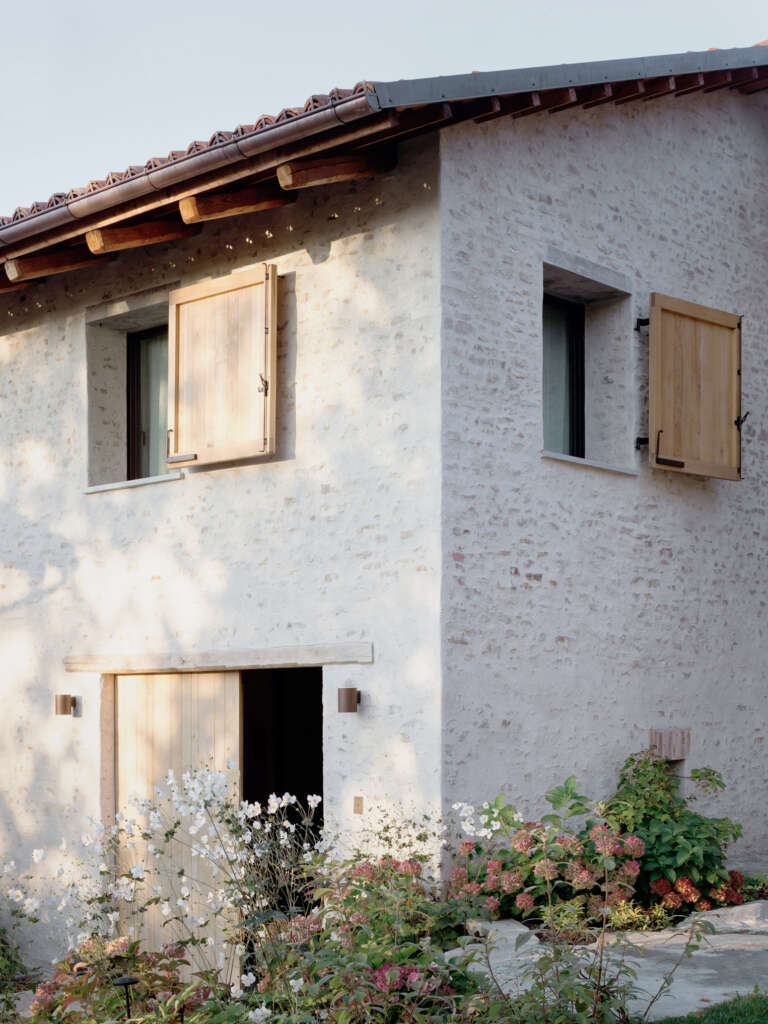
Cascina comprises three original stone volumes; a two-storey farmhouse, a large barn with hay loft, and a connecting enclosed bridge at first floor. The rural property previously featured small windows, resulting in a very dark interior with little relationship to the outdoors. Jonathan Tuckey Design reorientated the plan by relocating social spaces and the kitchen to the south east; a vantage that enjoys the best views across rolling countryside, making for a peaceful morning coffee experience, central to the clients’ brief. By opening new apertures and enlarging existing windows, the clients now enjoy framed vistas from within the home, appreciating softly shifting light throughout the day.
An impactful entrance hall welcomes occupants. By turning the existing staircase to first floor by 90 degrees and raising the first floor level, Jonathan Tuckey Design has instilled a generous overhead volume and unlocked organic circulation between ground and first floors. These elegant and simple adjustments establish a feeling of quiet luxury imbued in the fabric and spatial layout of Cascina. Guests step down into the lowered ground floor which branches north to a new home spa and sauna set under original vaulted brick ceilings, or south to a living space, dining room, and quiet kitchen with al fresco access.
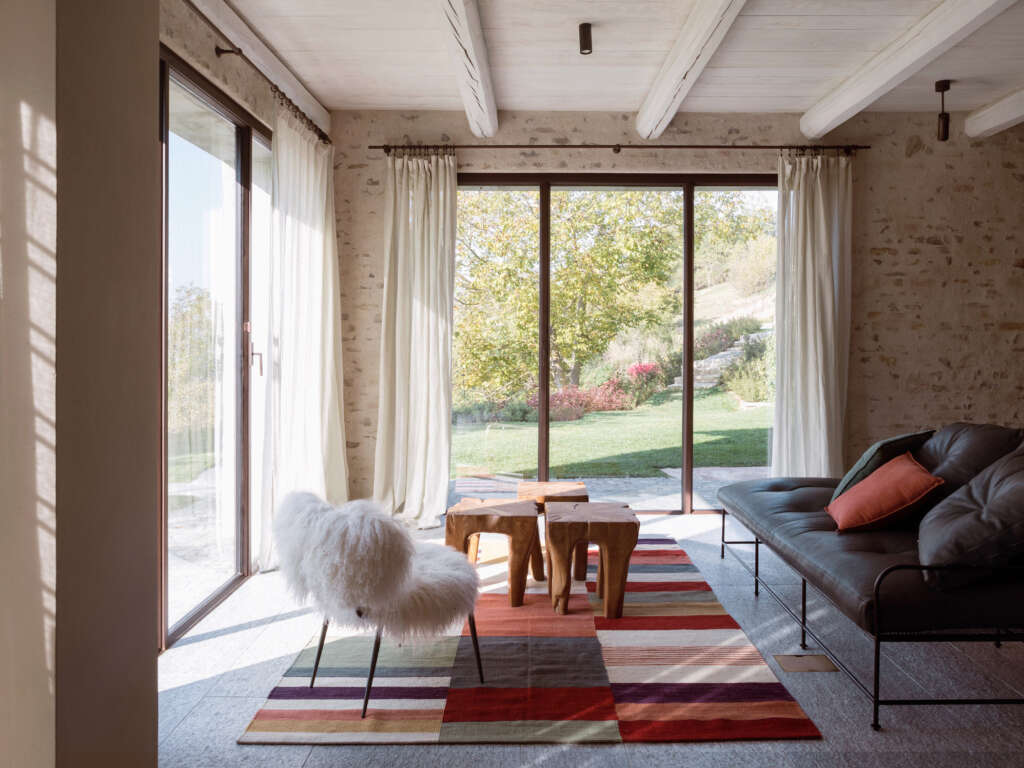
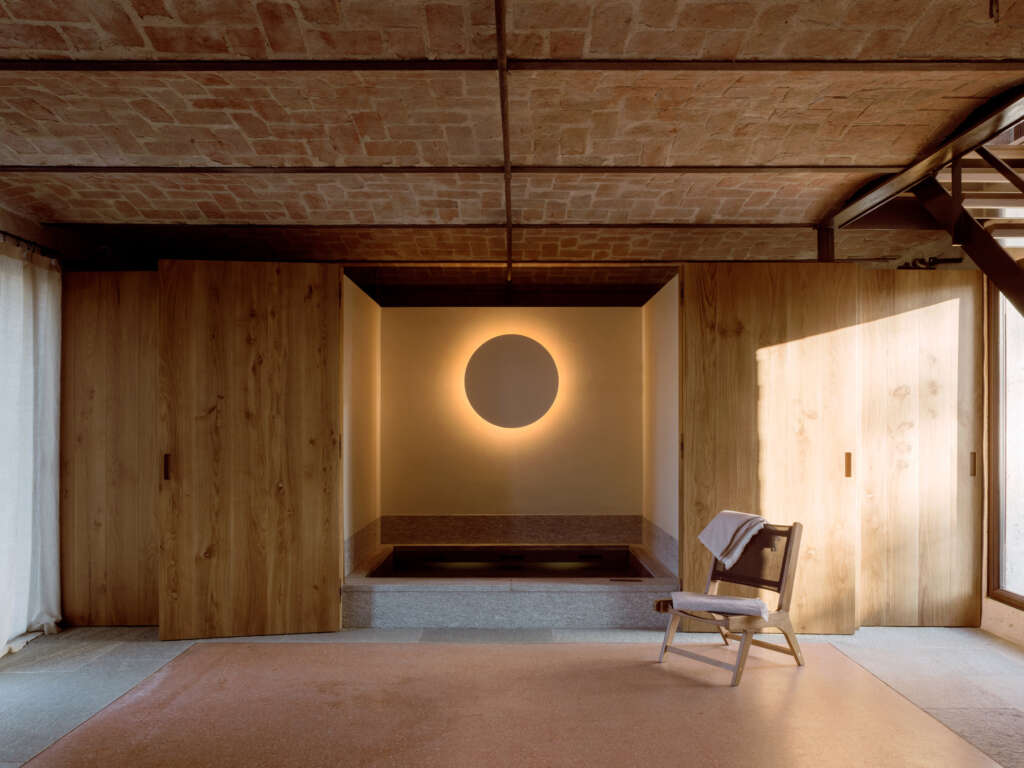
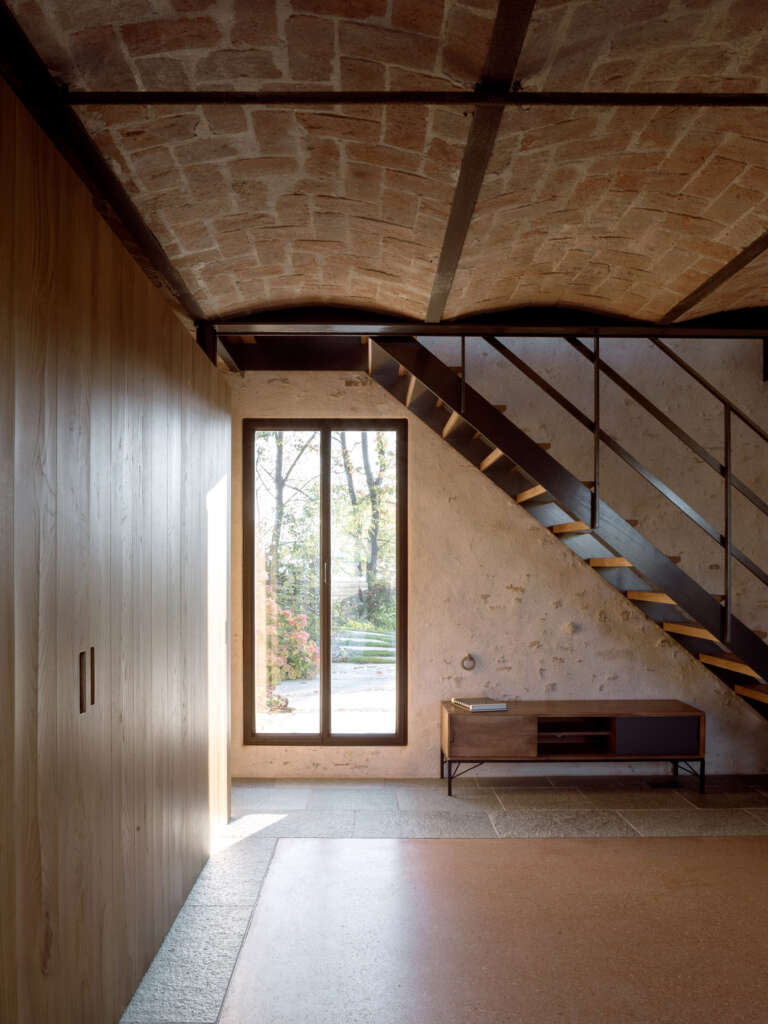
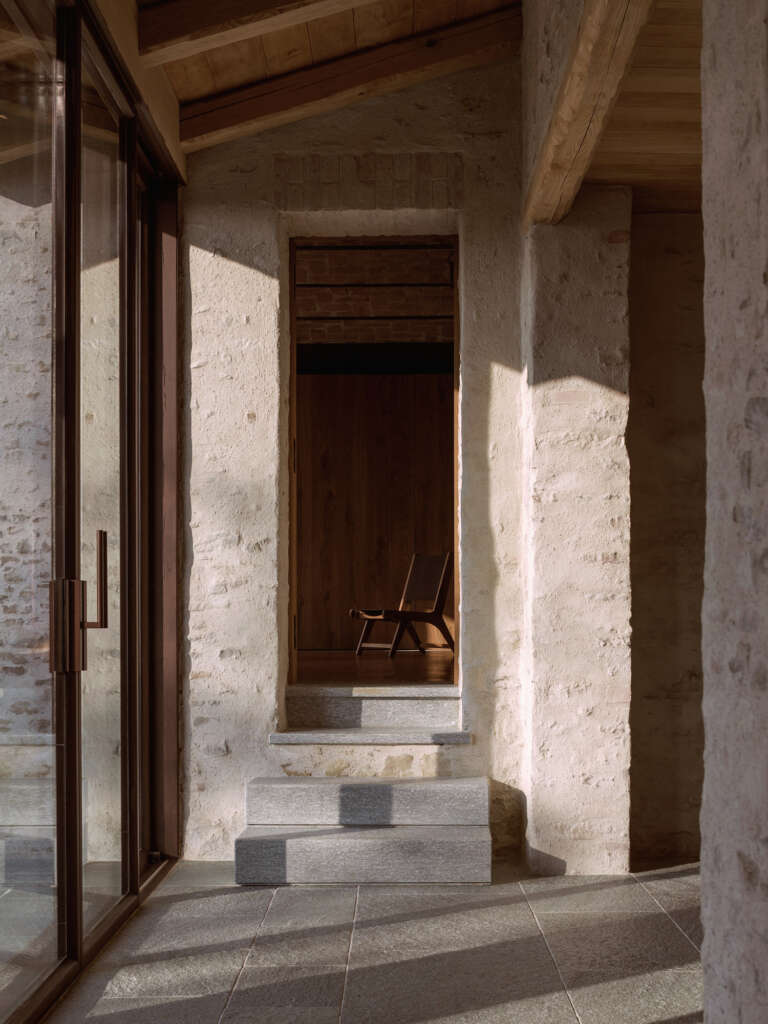
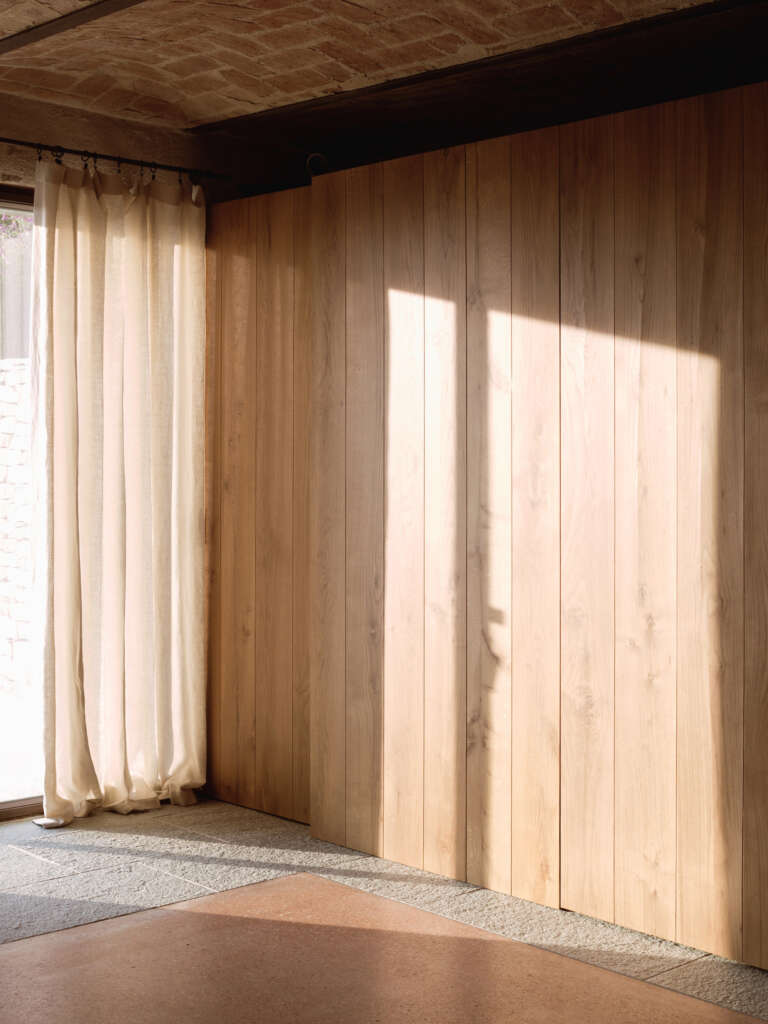
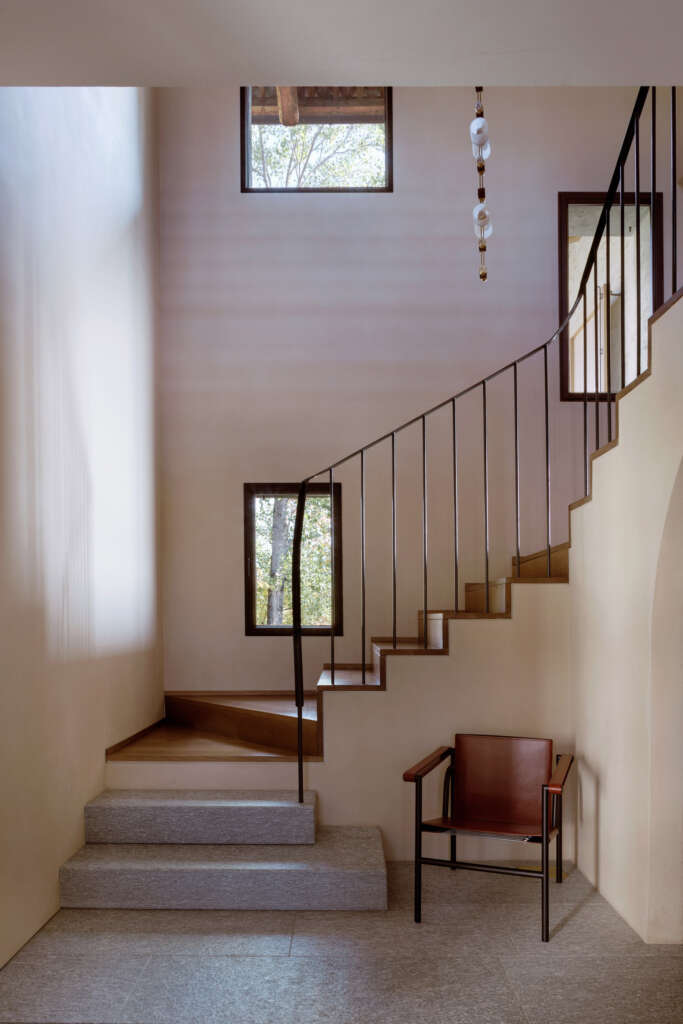
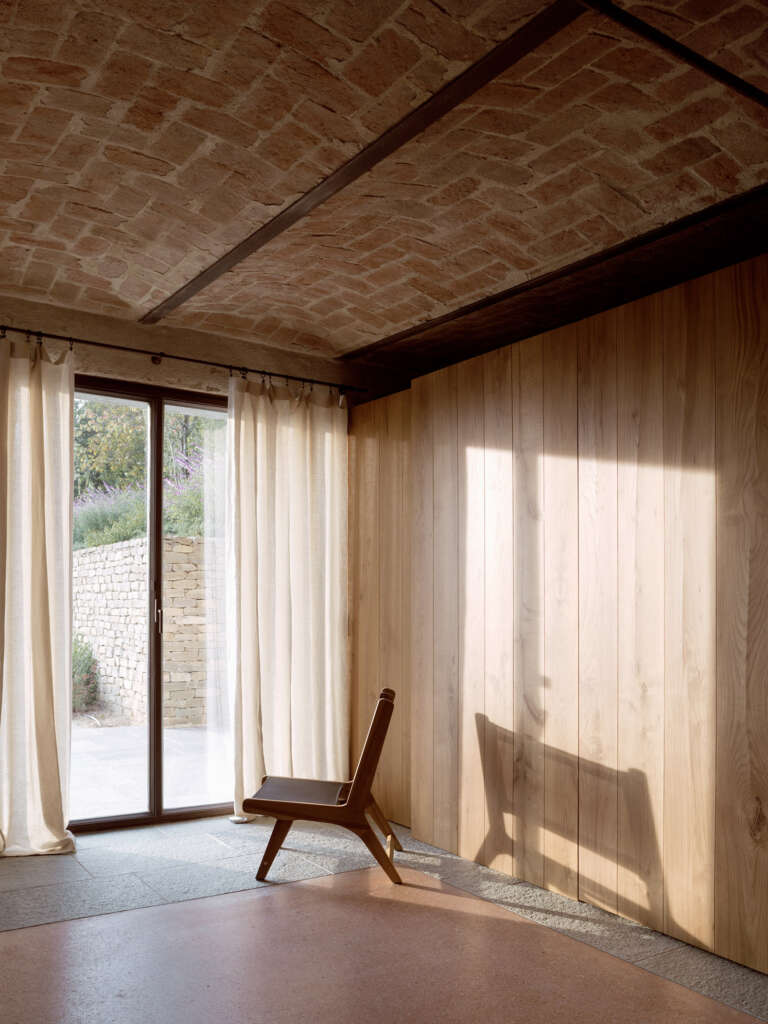
Upstairs, three bedrooms with ensuite bathrooms are positioned to the south and east of the plan to capture far reaching views. The main bedroom enjoys walk-through wardrobes, and access to a timber and steel balcony spanning the length of the suite. As in each of the bedrooms, a distinguished palette of timber and stone features in the ensuite bathrooms. Details including milk white tiles, circular mirrors and brass wall lamps celebrate exterior hues that are carried through the interior, offering a polished accompaniment to the carved solid marble basins of Cascina’s bathrooms.
Careful not to compromise the character of the property with modern balustrading, a traditional brick screen ‘gelosia’ camouflages the bridging space between the former barn and farmhouse. Set behind the brick breeze screening is a passage that wends its way to the upper floor hayloft, a light filled studio with vistas overlooking treetops and the Alps. Jonathan Tuckey Design has preserved the original trussed roof structure, which features a rich patina following an estimated 200 years of function. To upgrade the thermal performance of Cascina, Jonathan Tuckey Design inserted a new floating roof over the original beams, which remain in situ. The new roof is highly insulated, clad in sheets of local chestnut timber that gently diffuse light throughout the studio, drawn in through new gable-end windows. Beyond Cascina’s newly improved thermal envelope, a ground source heat pump provides a renewable energy source of warmth, harnessed by double glazing and improved insulation throughout.
Indicative of Jonathan Tuckey’s approach to craft and highly contextual material use, spaces throughout the ground floor interior are defined by muted Cocciopesto flooring. An ancient technique developed by the Romans, Cocciopesto is composed of lime and sand interspersed with other crushed fragments – in this case, crushed fragments of the existing terracotta roof tiles – and results in a solid, peppered floor finish which binds old to new. Warm, natural textures of Luserna stone, local chestnut timber, lime plaster and brick also feature throughout, anchoring Cascina in its place.
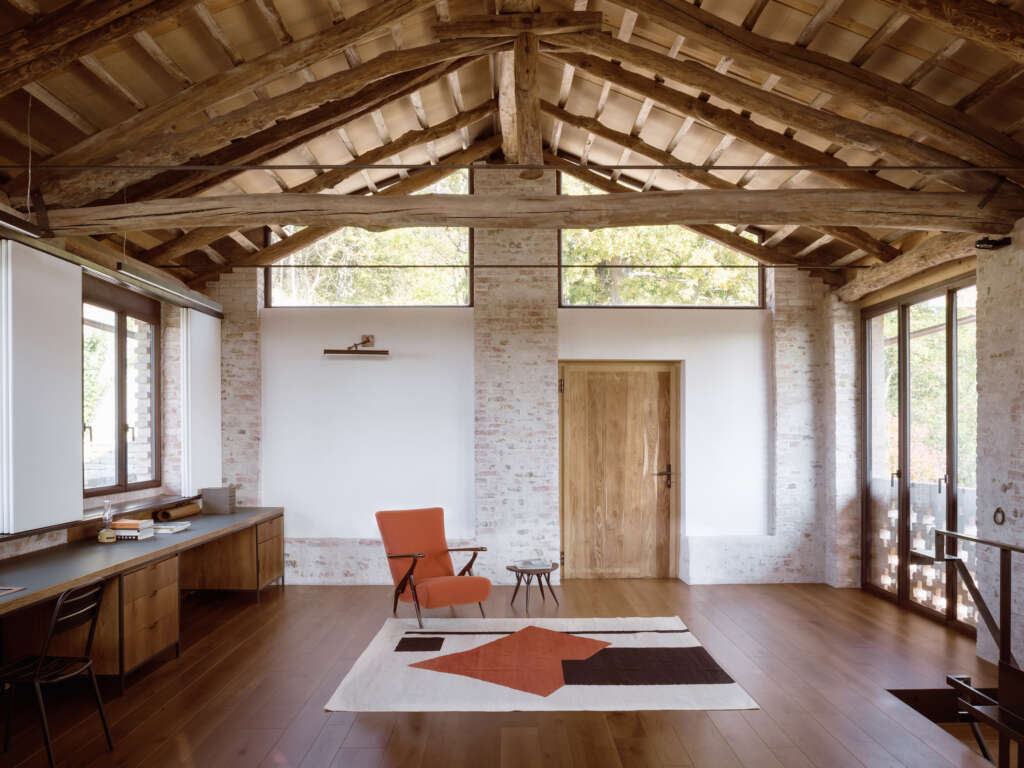

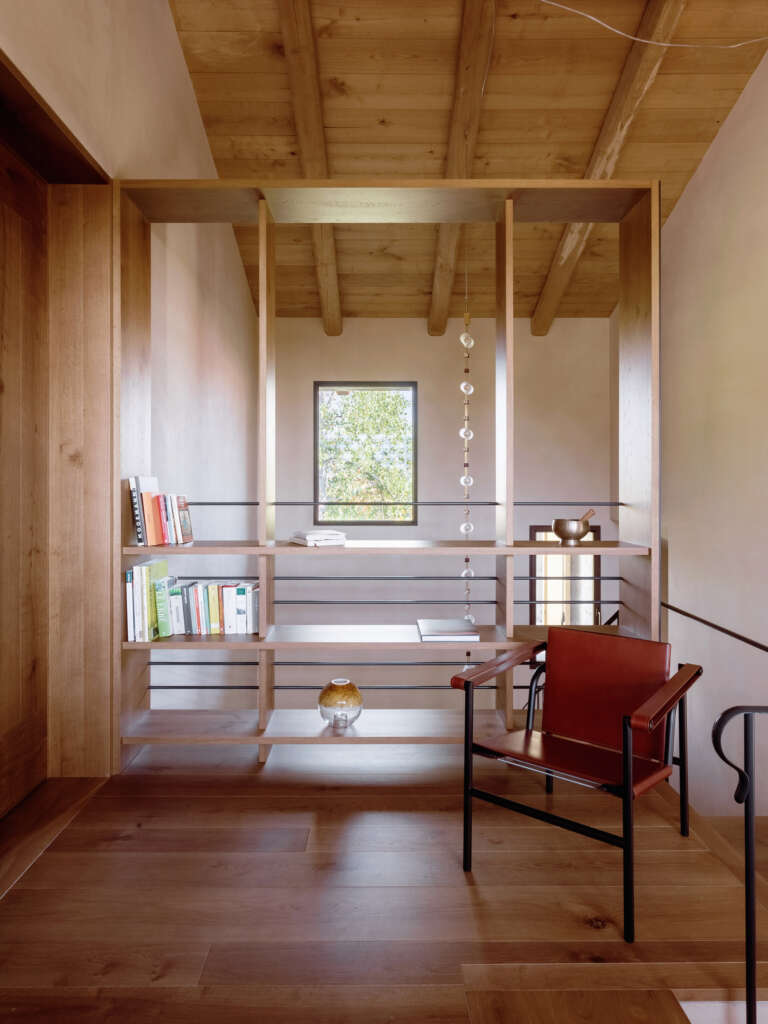
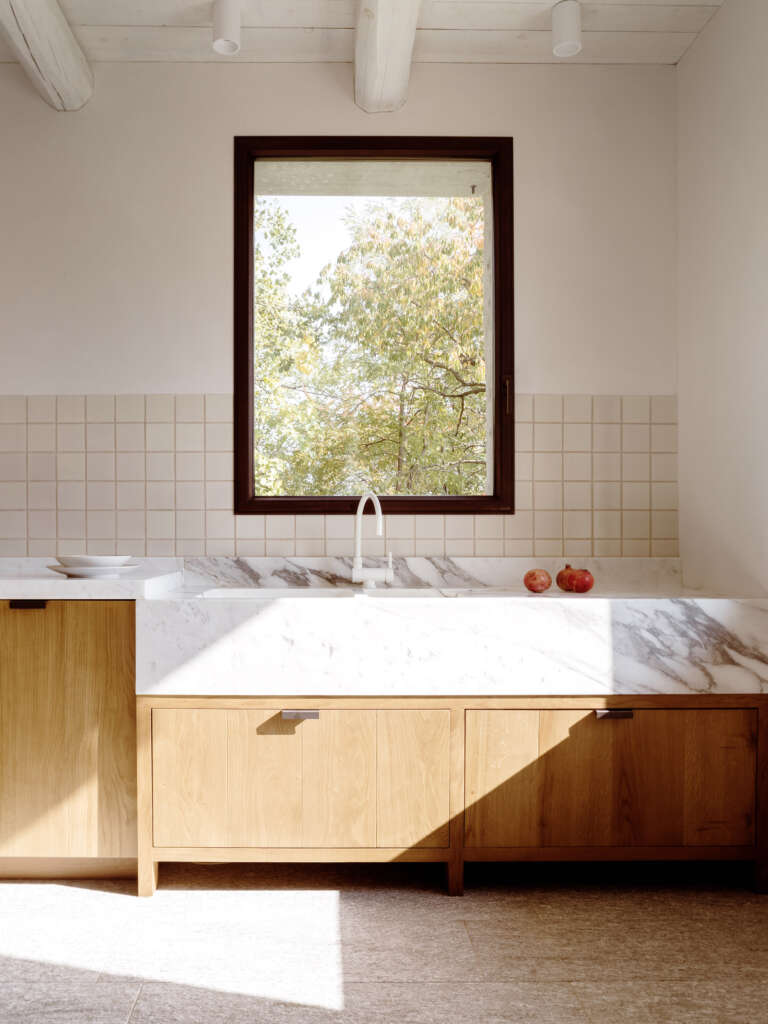
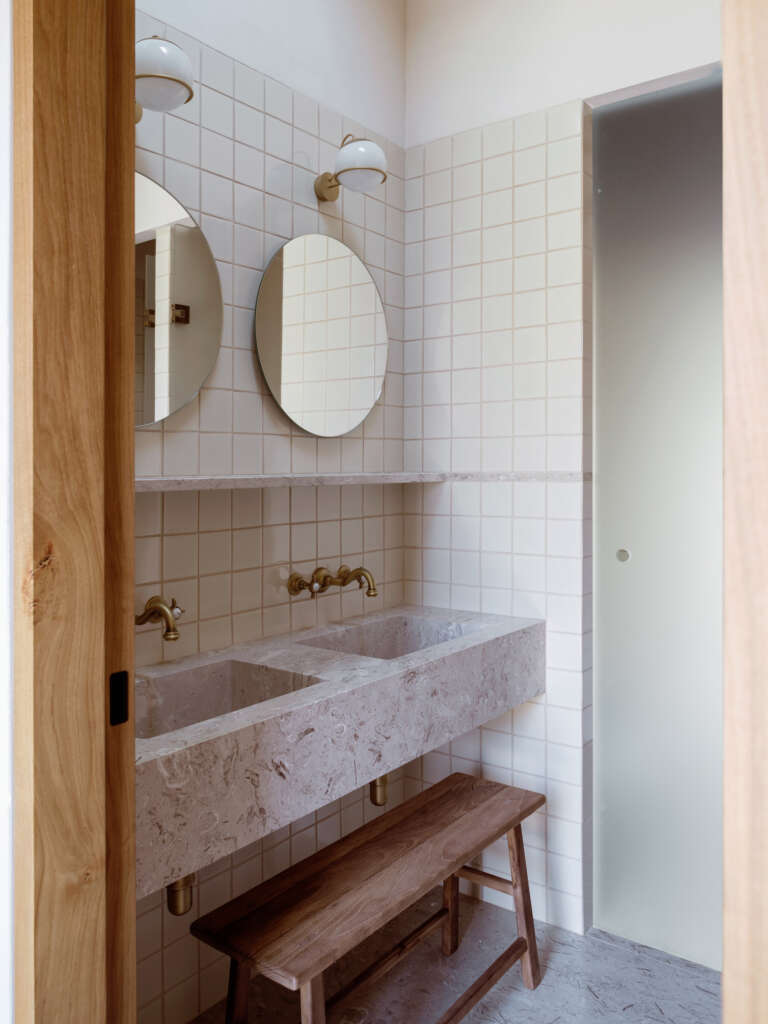
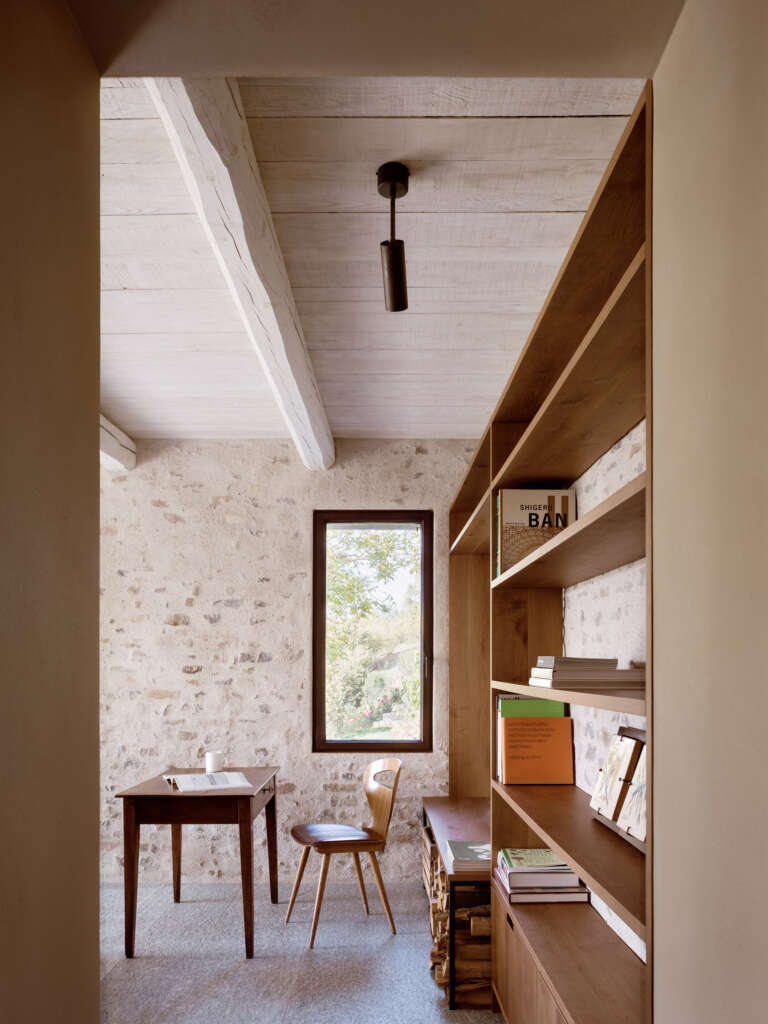
Cascina’s entire exterior facade is characterised by lime washed stone walls, appearing both refined and rustic throughout the seasonal changes. A sense of solidity is manifested from this detail, as if the house were intentionally hewn from its surrounding mountainous landscape, further enhanced on descent to the homes’ main entrance framed by bespoke timber shutters, concrete lintels, and iron lattice work.
The landscape plays an equally prominent role in the success of Cascina’s new identity. Jonathan Tuckey Design spent time organising the layout of the property’s sprawling, sloping gardens. A sculptural display of linear dry local stone retaining walls sets out a series of grassy terraces set with native planning, in line with the clients’ ambition to rewild much of the surrounding landscape. Reminiscent of Roman ruins, the walls also camouflage a slender swimming pool, and define an outdoor kitchen and patio to the west of the site.
The completed restoration is indicative of Jonathan Tuckey Design’s expertise in retaining original structures whilst implementing sustainable methods of contemporary intervention. Cascina offers a sanctuary of reformed elegance, founded on a deep respect to return it to its former bucolic legacy.
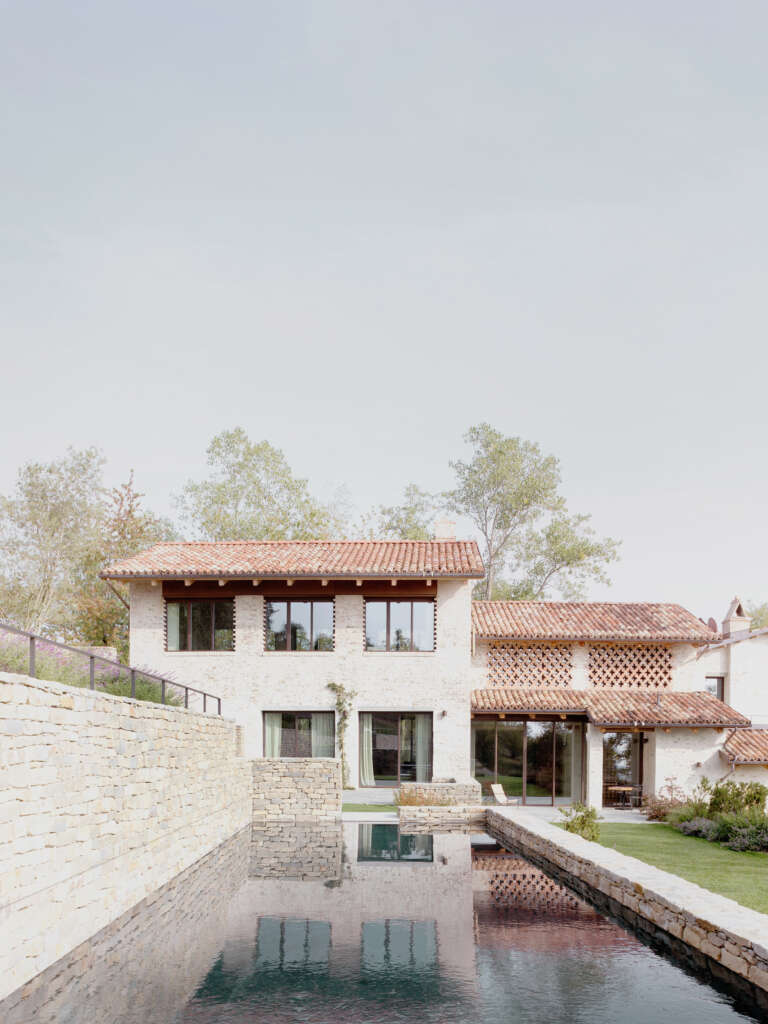
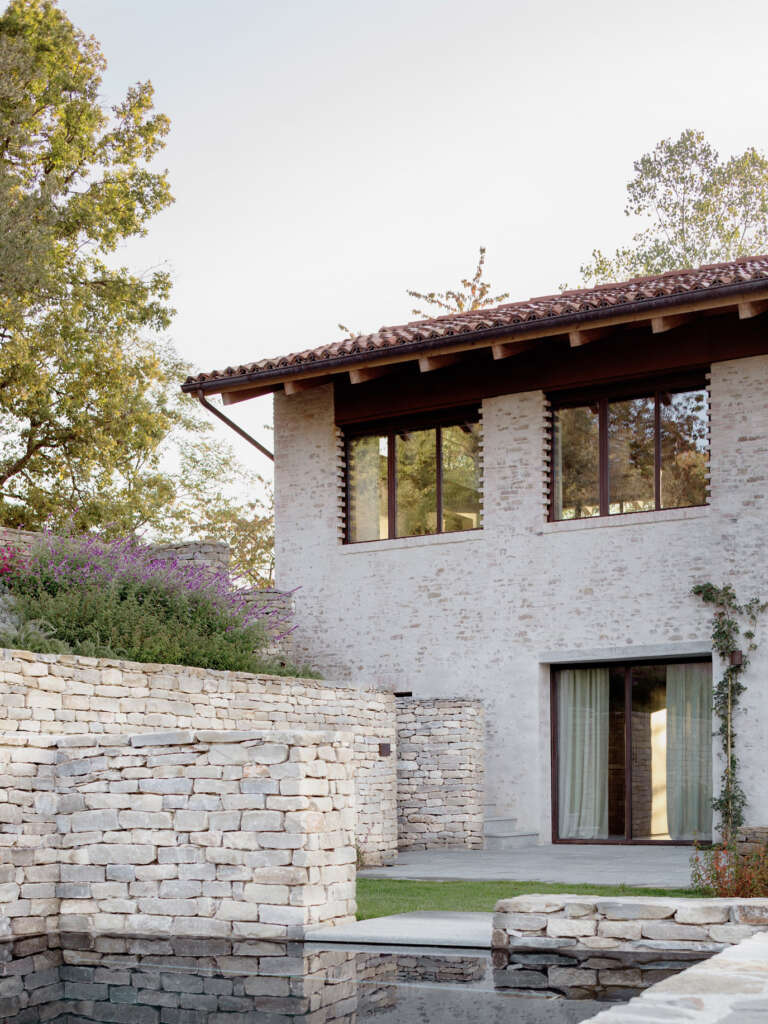
Elena Aleksandrov, Associate at Jonathan Tuckey Design says;
‘Reuse plays a prominent role in the studio’s approach to design and material selection. At Cascina, we had the opportunity to create a poetic dialogue between the landscape and the home which had previously not been realised to its full potential. This newfound connection is felt throughout Cascina by way of constant, intentional views, thoughtful and local material use, and the restoration and preservation of much of the existing fabric.’
‘An appreciation for existing materials has prompted the building’s authenticity, allowing it to flourish beautifully and integrate with its landscape after retrofit.’.
Project Credits
- Started on site: September 2017
- Completed: October 2020
- Location: Piemonte, Italy
- Architect: Jonathan Tuckey Design
- Project Architect: Associate Elena Aleksandrov
- Design team: Jonathan Tuckey, Elena Aleksandrov, Ross Langtree
- Interiors: Jonathan Tuckey Design
- Landscape: Jonathan Tuckey Design
- Horticulture: Studio Associato Vigetti Merlo
- Project Manager: Geom. Davide Sobrero
- Contractor: Fratelli Sartore srl
- Photography: © Francesca Iovene




